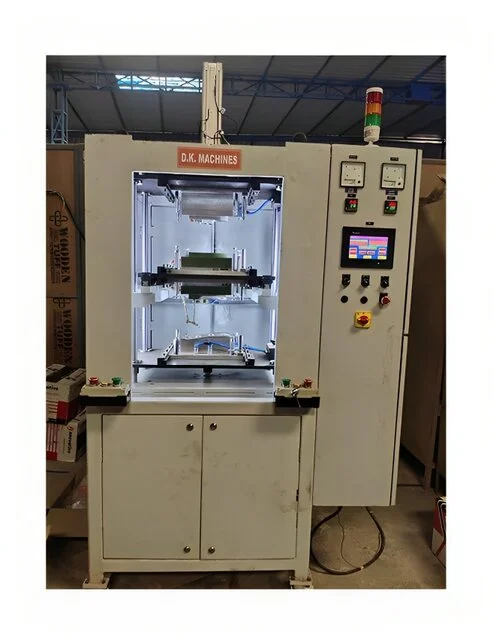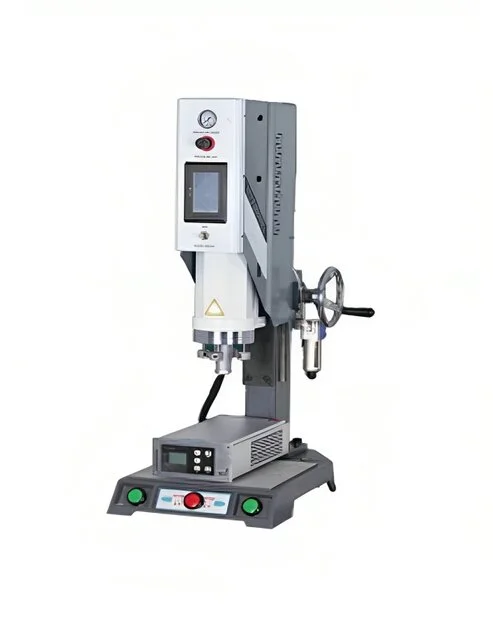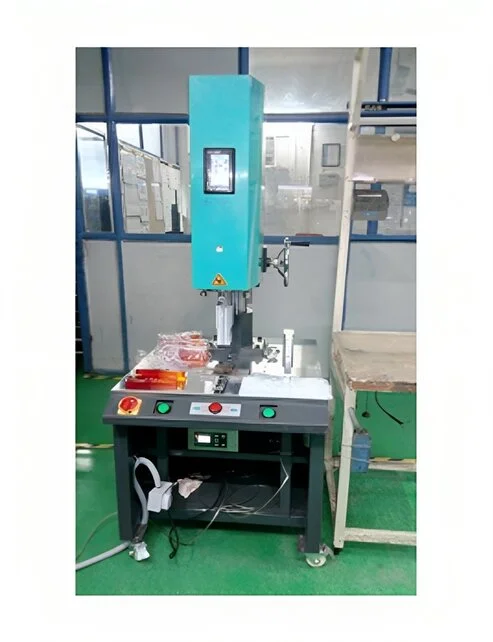Analog Ultrasonic Plastic Welding Machine
Product Description :
- Japan - NTK vibrators, matching Ace steel, titanium transducer.
- Japanese NTK series transducer, imported cylinder, strong power, good stability.
- Anti body back plus coaxial design of direct pressure, pressure equalization is applied to improve the welding precision.
- 1000W to 4200W super power output, suitable for large plastic Part welding, oldering good effect.
- Alloy layer welding mold, easy to wear and durable.
- Unique horizontal screw design, mold easier to debug.
- Limit welding systems, welding after the work piece will not spill glue.



Product Specification :
| MACHINE MODEL | MACHINE FREQUENCY | MACHINE WATTAGES | AIR SUPPLY | POWER SUPPLY |
|---|---|---|---|---|
| DK.2010A | 20KHz | 1000 W | 3-6 Kg. | 1 Ph. 220V , +/-1V. / 50-60Hz |
| DK.2015A | 20KHz | 1500 W | 3-6 Kg. | 1 Ph. 220V , +/-1V. / 50-60Hz |
| DK.2020A | 20KHz | 2000 W | 3-6 Kg. | 1 Ph. 220V , +/-1V. / 50-60Hz |
| DK.1522A | 15KHz | 2200 W | 3-6 Kg. | 1 Ph. 220V , +/-1V. / 50-60Hz |
| DK.1526A | 15KHz | 2600 W | 3-6 Kg. | 1 Ph. 220V , +/-1V. / 50-60Hz |
| DK.1532A | 15KHz | 3200 W | 3-6 Kg. | 1 Ph. 220V , +/-1V. / 50-60Hz |
| DK.1542A | 15KHz | 4200 W | 3-6 Kg. | 1 Ph. 220V , +/-1V. / 50-60Hz |
An ultrasonic plastic welding machine is a piece of equipment used for joining and bonding thermoplastic materials together by utilizing high-frequency ultrasonic vibrations. This process is a common technique in manufacturing, particularly in the plastics industry. Ultrasonic plastic welding can be used to create strong and precise welds in a variety of plastic parts and components.
Here's how an ultrasonic plastic welding machine typically works:
1.Transducer and Booster: The machine contains a transducer that converts electrical energy into high-frequency mechanical vibrations. These vibrations are then amplified by a booster.
2. Horn (Sonotrode): The ultrasonic energy is transmitted through a horn (also called a sonotrode) that focuses the vibrations onto the plastic parts to be welded.
3. Contact and Pressure: The plastic parts are placed in contact with the horn, and pressure is applied to hold them together firmly.
4. Vibration and Friction: The high-frequency ultrasonic vibrations cause friction at the interface of the plastic parts. This friction generates heat, softening the plastic material in a localized area.
5. Weld Formation: As the plastic material softens, it fuses together, and when the vibrations stop, the plastic cools and solidifies, creating a strong and permanent weld.
Ultrasonic plastic welding is precise, clean, and efficient. It is widely used in industries such as automotive, electronics, medical device manufacturing, and consumer goods production for applications like sealing, bonding, and assembling plastic components. The ability to create airtight and watertight seals makes it particularly suitable for applications where leak-proof connections are critical..
Inquiry Now
